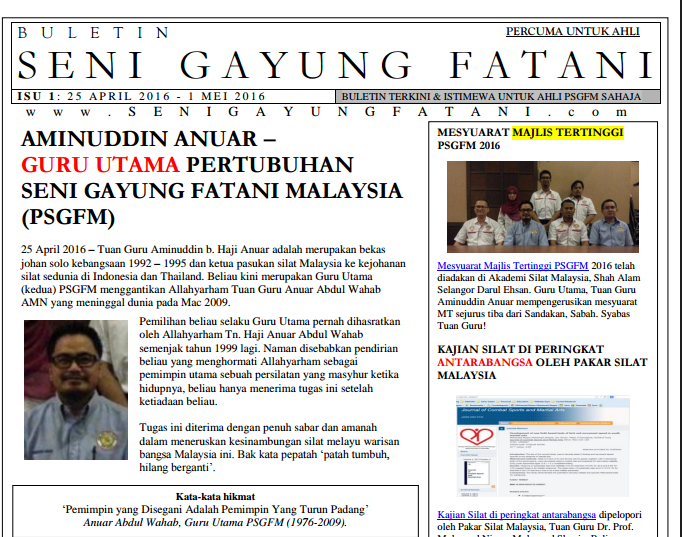Silat is one of the unique martial arts in this world that can become deadly in close combat fight. It is also known as the most practical self defense in term of counter attack strikes. The ability of silat exponent to counter attack the opponent to several killer points using simple strike such as straight punch amazed a lot of martial artists. No wonder many martial art experts come to Malaysia to learn this skill from silat guru.
The secret of counter attack skill lay down on the basis of silat position. The silat position is also known as silat posture or ‘sikap’. There are seven silat postures in silat. Normally the silat students will learn these silat postures on the first day of silat training. The silat postures syllabus is called as ‘Bunga’ or ‘Bunga Silat‘. In Bunga, the silat students will learn 7 silat positioning on how to receive strikes from multi-directional angles. You also can use these seven positions to strike and to counter attack the armed or unarmed opponent.
Thus, you need to invest at least 2-3 hours per day just to master these silat positions especially on the body movements and step patterns of the Bunga. You also will need to combine the defensive techniques and striking skills to produce a powerful counter attack strike that can hurt your opponent in no time. Normally the silat guru will position seven opponents around you during the training to mimics that actual fight either with or without weapon. You will need to undergo this hard training even thought you are injured in this session. This will help you to build confident in case something bad happens in the real situation. Learning the practical self defense techniques in silat training will upgrade you understanding on how unique silat compare to other martial arts.
Once you understand the function of these seven positions, you will need to train the striking skills (e.g. as punching, kicking and sweeping) in order to produce a fluid and powerful counter attack strike during the actual fight. In addition, these seven positions will help you to determine the possibility of strikes that will come to you. By knowing the body position, the breathing flows, the eyes movements and also the distance of the opponent, you can predict the type of attack that you will receive from your enemy. Thus, it is important for you to choose which silat position that you need to perform based on the opponent position. Sometimes, it is better to let your opponents to strike you first in order to know the strength and weakness of their strikes.
Knowing the best practical self defense techniques and moves in silat that suit you is the most important part of learning silat. By practising all the movements, you will never have to worry either to fight alone one on one or in a group attack. However, it is important to understand that physical fighting is the last option in any arguments unless you have to.




Leave a Reply
You must be logged in to post a comment.